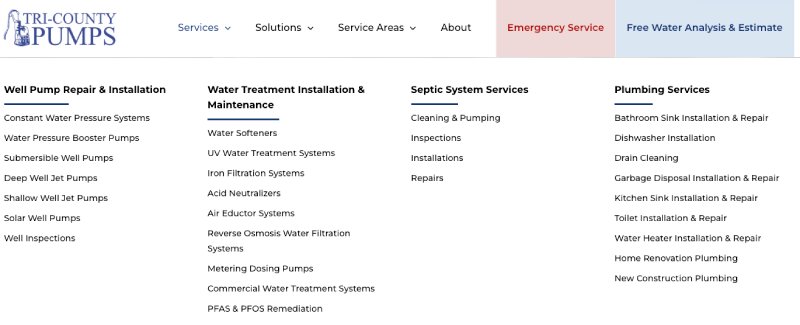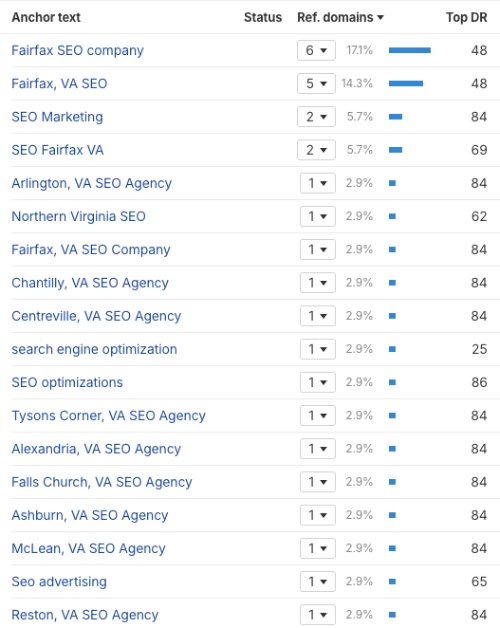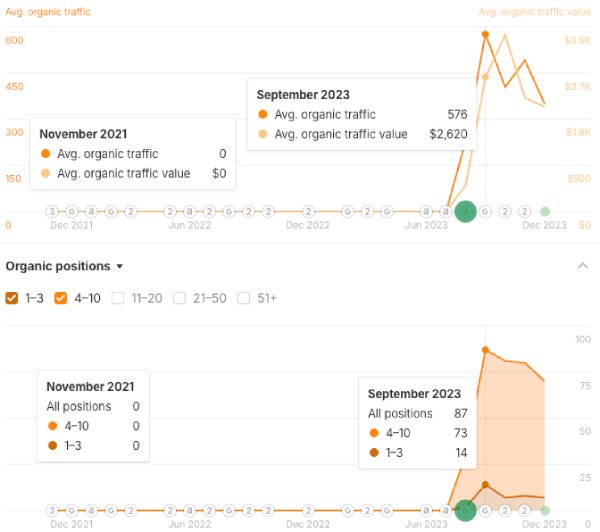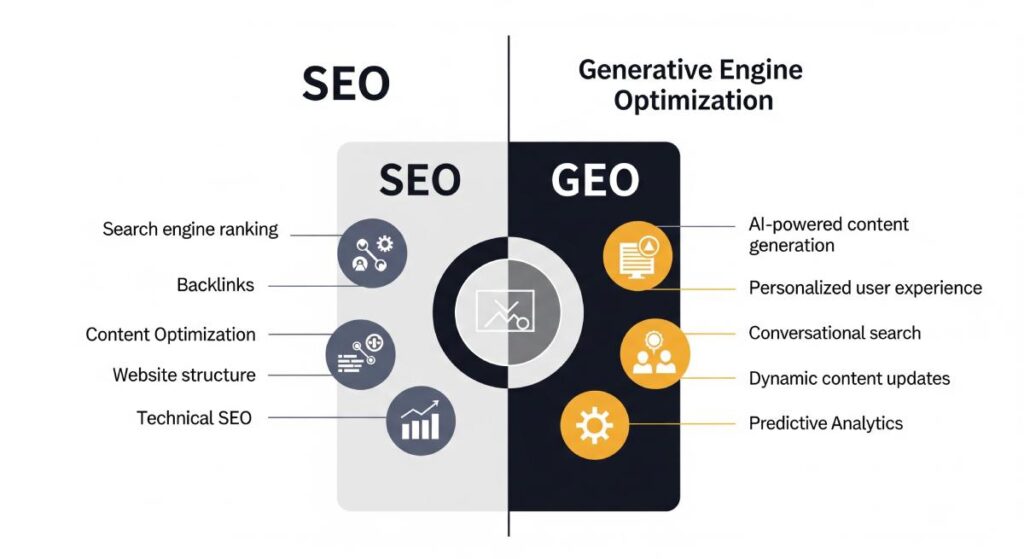If you’re investing in SEO but still struggling to outrank your competitors, you’re not alone. Many companies find themselves buried under competitors in search results despite similar effort or spend.
What separates top-ranking sites from those stuck below often comes down to overlooked technical factors, content structure, and strategic consistency. Below, we’re going to break down specific reasons your competition may be outperforming you and provide practical fixes to help close the gap.
Top Reasons Why Your Competition Ranks Higher Than You
Higher rankings don’t happen by accident; competitors gaining more visibility have likely refined elements of their SEO that go beyond surface-level best practices.
Better Site Architecture & Crawl Efficiency
A common but under-appreciated reason for ranking differences between different companies exists in how a website is structured.
Competitors may have created a more logical hierarchy of content, where pages are grouped under clearly defined categories and subcategories. It suggests to algorithms that your site has value, helping your pages show up more often.

How To Fix It
Start by mapping your current URL structure to identify any areas of disorganization or redundancy. Websites using the Yoast SEO plugin can easily review their indexable pages by viewing their sitemap index by appending sitemap_index.xml to their root domain URL (example-domain.com/sitemap_index.xml). This is where all indexable sitemaps, such as the page sitemap (i.e. contact/about/service pages, etc.) and post sitemap (i.e. blogs, news, etc.), can be located. Additional locations may include /wp-sitemap.xml, /sitemap.xml, robots.txt, or by using other tools such as ScreamingFrog.
From there, restructure your navigation to follow a clean parent/child hierarchy based on services, topics, or categories.
- example-domain.com/parent-page1/
- example-domain.com/parent-page1/child-page1/
- example-domain.com/parent-page2/
- example-domain.com/parent-page2/child-page1/
Implement 301 redirects as needed to preserve any existing SEO equity while improving crawl paths.
| From URL | To URL |
|---|---|
| https://example-domain.com/old-url-1/ | https://example-domain.com/new-url-1/ |
| https://example-domain.com/old-url-2/ | https://example-domain.com/new-url-2/ |
Stronger Topical Authority (Entity-Based SEO)
If your competitor ranks well across a wide range of related search terms, they’ve likely developed topical authority. It typically means they’ve built out an entire ecosystem of content around a subject, from introductory explainers to deep-dive pieces, which helps Google associate their domain with that topic at large.
How To Fix It
Start by running a competitor content gap analysis to identify topics they’ve covered that you haven’t. From there, develop a content roadmap that starts with foundational topics and progresses logically to more advanced content, as this improves internal linking opportunities and builds thematic relevance over time.
Implementation Of Rich, Detailed Schema Markup
Pages that show enhanced search features like star ratings, FAQs, or product availability are using schema markup. These upgrades can mean a noticeable jump in how often users choose your result.

So, if your competitors are using detailed schema while your pages remain unmarked, you’re likely missing out on visibility. P.S. – This is also extremely important when performing Generative Engine Optimization (GEO).
Generate Schema Easily With This Tool
How To Fix It
Identify which schema types are appropriate for each of your top pages. For service pages, this might include FAQs and local business schema, and for blog posts, consider article or author schema. You should generate and validate your markup using tools like Google’s Rich Results Test before implementing it live on the site.
Higher Quality Backlinks & Anchor Text Variation
A large backlink count is good, but don’t forget that quality still outweighs quantity.
Competitors may have fewer links but from stronger domains, such as high-authority news outlets or respected industry publications.
On top of that, they’re likely varying their anchor text to target a broader set of keywords, improving keyword relevance across different search intents.

How To Fix It
Use a backlink analysis tool to audit your own link profile alongside a top competitor. Identify sources they’ve secured links from that you haven’t, especially those with high domain authority. Evaluate your anchor text usage and expand it to include long-tail variations and semantically related phrases that align with your target keyword clusters.
Content Refresh Frequency & Historical Optimization
Fresh content isn’t just about making new blog posts; pages that rank well are often updated regularly with current information, improved visuals, and more relevant internal links. Competitors who revisit and update their existing pages tend to build stronger authority and maintain relevance in the eyes of search engines.


In Figures 1.3 & 1.4, there is a clear correlation between the optimizations that were made on August 4th, 2023 (nearly two years after it went live) and the sudden spike in traffic, traffic value, and ranking keywords starting September 2023.
How To Fix It
Compare your core pages with the top three competitor pages for the same target terms. Look at the depth of their content along with their update frequency, multimedia usage, and overall page structure.
Once you have some insights, go ahead and add missing sections, update data and stats, improve internal linking, and incorporate stronger calls to action. Remember: making incremental improvements over time will build momentum.
Premium SEO-Optimized Hosting
Quick load times improve the user experience and often lead to better search performance, especially on mobile devices. If your competition hosts their site on a more optimized server, their performance metrics, such as Largest Contentful Paint (LCP) or Cumulative Layout Shift (CLS), are likely helping them rank higher.
How To Fix It
Run a Lighthouse audit or use tools like GTmetrix to benchmark your current site speed and Core Web Vitals. Identify whether your hosting setup is part of the problem. If performance is lacking due to server response times or lack of caching, consider upgrading to a host that’s built with SEO and page experience in mind.
Get A Leg Up On The Competition By Working With The SEO Consultants At 321 Web Marketing
 If the effort is there but the outcomes aren’t, it’s time to rethink the approach you’re taking. At 321 Web Marketing, we specialize in technical SEO audits, competitor intelligence, and performance optimization.
If the effort is there but the outcomes aren’t, it’s time to rethink the approach you’re taking. At 321 Web Marketing, we specialize in technical SEO audits, competitor intelligence, and performance optimization.
We don’t hand over vague recommendations; we deliver specific, measurable strategies that address what’s holding your rankings back.
Let us show you what’s possible with the right strategy in place. Contact us today to schedule a consultation and learn how we can help you capture more qualified leads, track performance more accurately, and outpace your competition.







